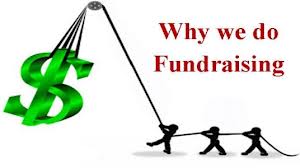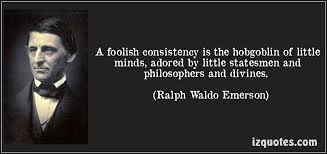 Welcome to O.D. Fridays at DonorDreams blog. Every Friday for the foreseeable future we will be looking at posts from John Greco’s blog called “johnponders ~ about life at work, mostly” and applying his organizational development messages to the non-profit community.
Welcome to O.D. Fridays at DonorDreams blog. Every Friday for the foreseeable future we will be looking at posts from John Greco’s blog called “johnponders ~ about life at work, mostly” and applying his organizational development messages to the non-profit community.
In a post titled “Alive AND Dead,” John shares a thought experiment that was devised by Austrian physicist Irwin Schrodinger. It was a mind bending story about a box, a cat, poison, food and a conclusion that proves that the cat is dead AND alive until someone opens the box to check the situation out.
Yes . . . my friend, John Greco, shared a story that was used to demonstrate the nature of quantum mechanics in a blog post about organizational development.
Yes . . . I am going to go down the same rabbit hole this morning and apply all of this to non-profit organizations by sharing two stories. One story is about an organization that was both alive AND dead. The other story is about an executive director who was also both alive AND dead.
I encourage you to click through and read John’s post. But, if you haven’t done so already, please keep in mind that the basic premise to all of this is best summed up in John’s own words:
“It seems our perception is reality only until we see reality. In this sense, during times of great change, we can be living and working in a world that no longer exists if we do not actually see the changes in the world we are actually living and working in …”
The agency is alive AND dead
 If I’ve seen it once, I’ve seen it hundreds of times. And I bet you have, too. I will omit the names to protect the innocent.
If I’ve seen it once, I’ve seen it hundreds of times. And I bet you have, too. I will omit the names to protect the innocent.
Once upon a time . . . there was a non-profit organization that everyone in the community looked upon as being big, strong and invincible. Their staff was well regarded. They had very impressive volunteers who sat on their board. They are what I describe as a “blue chip agency“.
Ask anyone in the community and they would tell you that the organization was awesome. Ask any donor what they thought, and they’d swear the agency was a terrific investment. Ask any of the agency’s board members, and they’d tell you that they can do ANYTHING (and they actually believe it). Ask the staff and you’d hear the same thing.
As the story goes . . . one day someone gets the bright idea to run a capital campaign and double the size of their existing facility. Donors are engaged. Millions of dollars are raised. The facility is expanded.
Putting aside the question of “alive vs. dead” . . . let’s re-frame it a little differently. Did this agency have the “organizational capacity” that everyone thought they did?
As we learn from John’s blog post, the answer is both ‘YES’ and ‘NO’ until you open the box and take a good look.
In this story . . . everyone perceived that organizational capacity existed; funding was secured based on those perceptions and the building was expanded. Unfortunately, when you looked a little deeper this organization didn’t have the capacity to raise the necessary annual operating dollars to run a facility twice its original size.
For a period of time, this agency was both alive AND dead.
The CEO is alive AND dead
 We’ve also all seen this situation.
We’ve also all seen this situation.
Once upon a time . . . there was an executive director who was well thought of by their peers. They were doing what was necessary to keep the agency together and everything moving in the right direction. Donors love the executive director. The staff would take a bullet for their boss. The board of directors continued to say nice things on the year-end evaluation.
This person seemingly had lots of job security, but one day everyone in the community wakes up to the news that the board voted to fire the CEO.
(Spoiler alert . . . before you start asking ‘who’ is Erik talking about, let me confess that this example is an amalgamation of many different situations that I’ve seen over time.)
So, what happened to precipitate this reversal of good fortune for the executive director? Here are just a few real life explanations that I’ve seen turn things upside down very quickly:
- A major grant or funding source is lost and great stress descends upon the agency.
- One employee decides they should be the executive director and starts rocking the boat.
- One board member has been unhappy for quite some time about (insert issue here) and decides to stop being quiet. They finally have the courage to stand up in the face of general contentment and makes it an issue, which gets traction quickly.
For a period of time, this executive director was both alive AND dead.
The moral to these stories?
 A non-profit organization that doesn’t invest time and resources into evaluation and critique is akin to an ostrich sticking its head in the sand.
A non-profit organization that doesn’t invest time and resources into evaluation and critique is akin to an ostrich sticking its head in the sand.
Does your agency . . .
- Host a critique meeting after each of its special event fundraisers?
- Formally evaluate its executive director at the end of every year?
- Host a critique meeting after its annual campaign pledge drive?
- Formally evaluate every board board volunteer at the end of every year?
- Host an annual meeting for donors to learn more about your agency? And survey your donors to solicit feedback on how they think you’re doing and what you can do better?
- Formally evaluate every employee at the end of the year?
If you answered ‘NO to any of these questions, there there is a possibility that your organization is both . . .
Dead AND Alive
As always, John sums it up better than I can, when he says:
“Help people look into the box. One key component of change management is communicating the need for change early and often. It is selling the problem. It is noting the forces and effects that require change. It is articulating the “burning platform.” It is projecting out in compelling fashion what the consequences are if we don’t begin transitioning.”
Is your organization dead? Is it alive? Is it BOTH? Using John’s words, what does your agency do to “help people look into the box“? By the way, I know someone who can help you look inside that box and provide an outsider’s perspective. 😉
Here’s to your health!
Erik Anderson
Founder & President, The Healthy Non-Profit LLC
www.thehealthynonprofit.com
erik@thehealthynonprofit.com
http://twitter.com/#!/eanderson847
http://www.facebook.com/eanderson847
http://www.linkedin.com/in/erikanderson847

 Over the years, I’ve met non-profit board volunteers who didn’t see value or the need for staff. Likewise, I’ve met countless numbers of staff who complain about their board members. I’ve also met executive directors who deliberately do things to disengage their board volunteers (e.g. taking on fundraising responsibilities, reducing the number of board meetings, etc).
Over the years, I’ve met non-profit board volunteers who didn’t see value or the need for staff. Likewise, I’ve met countless numbers of staff who complain about their board members. I’ve also met executive directors who deliberately do things to disengage their board volunteers (e.g. taking on fundraising responsibilities, reducing the number of board meetings, etc). Welcome to part four of our five part series on Governance. We have already discussed the Board’s role in
Welcome to part four of our five part series on Governance. We have already discussed the Board’s role in 
 Welcome to O.D. Fridays at DonorDreams blog. Every Friday for the foreseeable future we will be looking at posts from John Greco’s blog called “
Welcome to O.D. Fridays at DonorDreams blog. Every Friday for the foreseeable future we will be looking at posts from John Greco’s blog called “ I find this distinction really fascinating, and I haven’t been able to stop thinking about it since I read this post. So, I’ve been focused on identifying some non-profit related “predicaments” and here is what I’ve come up with . . .
I find this distinction really fascinating, and I haven’t been able to stop thinking about it since I read this post. So, I’ve been focused on identifying some non-profit related “predicaments” and here is what I’ve come up with . . . Board member engagement is a common thread running through many of my blog posts. This isn’t because I’m a broken record. The fact of the matter is that so many of the things that plague non-profits are simply “symptoms” of a bigger problem. Yep, you guessed it . . . the root cause of many of our challenges in the can be traced back to our boards.
Board member engagement is a common thread running through many of my blog posts. This isn’t because I’m a broken record. The fact of the matter is that so many of the things that plague non-profits are simply “symptoms” of a bigger problem. Yep, you guessed it . . . the root cause of many of our challenges in the can be traced back to our boards. Last week a dear non-profit friend of mine from California couldn’t sleep. She tossed and she turned. Ultimately, she got out of bed, turned on her computer and started talking into a microphone. When I woke up in the morning in my bed in Elgin, Illinois, there was an email sitting in my inbox with a voice file attachment. Her words have tumbled around in my head for a week, and I’ve decided to enlist your support in dissecting them.
Last week a dear non-profit friend of mine from California couldn’t sleep. She tossed and she turned. Ultimately, she got out of bed, turned on her computer and started talking into a microphone. When I woke up in the morning in my bed in Elgin, Illinois, there was an email sitting in my inbox with a voice file attachment. Her words have tumbled around in my head for a week, and I’ve decided to enlist your support in dissecting them. After listening to my friend’s recording, I started Googling around and searching for anything that anyone might have written about characteristics and traits of effective boards. I was especially intrigued by her question about incorporating personality testing into the board development process. After all, many workplaces are incorporating this type of assessment into their employee hiring process.
After listening to my friend’s recording, I started Googling around and searching for anything that anyone might have written about characteristics and traits of effective boards. I was especially intrigued by her question about incorporating personality testing into the board development process. After all, many workplaces are incorporating this type of assessment into their employee hiring process. Competencies
Competencies Recently, I’ve been doing a lot of what I consider “Nonprofit 101” trainings focused on board roles and responsibilities. After talking with board members about their fiduciary responsibilities, they often push back on their role in fundraising. I’m becoming really good at giving them the “sympathetic smile,” which communicates that I’m hearing their fear but not giving them permission to wash their hands of their role in resource development.
Recently, I’ve been doing a lot of what I consider “Nonprofit 101” trainings focused on board roles and responsibilities. After talking with board members about their fiduciary responsibilities, they often push back on their role in fundraising. I’m becoming really good at giving them the “sympathetic smile,” which communicates that I’m hearing their fear but not giving them permission to wash their hands of their role in resource development. After all, how scary can it be to “tell stories,” right?
After all, how scary can it be to “tell stories,” right? Welcome to O.D. Fridays at DonorDreams blog. Every Friday for the foreseeable future we will be looking at posts from John Greco’s blog called “
Welcome to O.D. Fridays at DonorDreams blog. Every Friday for the foreseeable future we will be looking at posts from John Greco’s blog called “ Well, huh? Let me see here. Every good planning process begins with an assessment /evaluation which springboards off into goal setting, strategy development and action planning. If the organization I just referenced hadn’t been so “foolishly consistent,” they would’ve seen the following:
Well, huh? Let me see here. Every good planning process begins with an assessment /evaluation which springboards off into goal setting, strategy development and action planning. If the organization I just referenced hadn’t been so “foolishly consistent,” they would’ve seen the following: The board members and executive director of the agency I reference in the example above certainly were “little“. I say this because their “foolish consistency” and unwillingness to do any assessment and planning had locked them into being a certain size. When you looked at their agency budget, they had brought in the same amount of revenue for the last 10 years.
The board members and executive director of the agency I reference in the example above certainly were “little“. I say this because their “foolish consistency” and unwillingness to do any assessment and planning had locked them into being a certain size. When you looked at their agency budget, they had brought in the same amount of revenue for the last 10 years.
 There are exceptions to my general rule of “no selling”. The Girl Scouts and Boy Scouts sell cookies and popcorn very well. Their troops, which are volunteer-led, rely on those sales for most of their troop activities. Good for them! There are also
There are exceptions to my general rule of “no selling”. The Girl Scouts and Boy Scouts sell cookies and popcorn very well. Their troops, which are volunteer-led, rely on those sales for most of their troop activities. Good for them! There are also